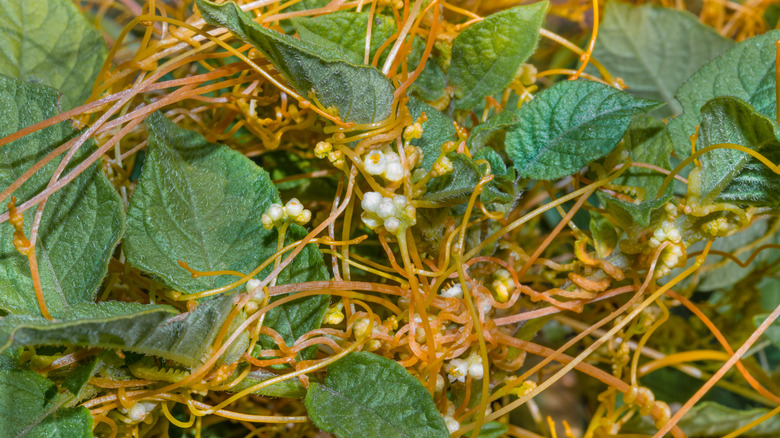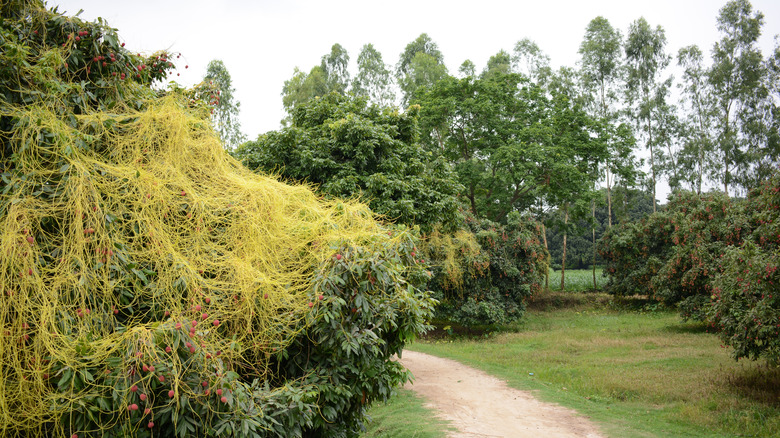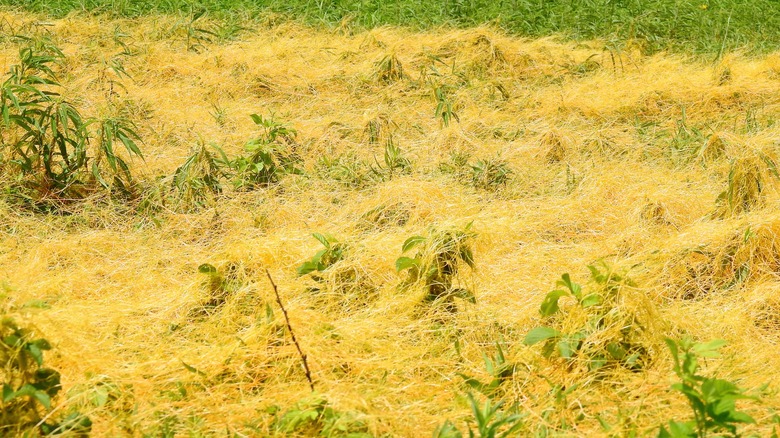How To Protect Your Yard From Parasitic Dodder Weed
In the realm of lawn care, weeds pose a constant challenge. Their rapid growth and ability to overrun our yards can be quite frustrating. Among the numerous weed species, one in particular presents a significant threat — dodder weed. This invasive plant has the potential to cause extensive damage if left uncontrolled. Thankfully, there are methods to control and prevent the madness from taking over, including hand-pulling, pruning, or mowing infested areas.
Dodder weed, scientifically classified in the Cuscuta species, is a parasitic vine that targets a variety of vegetables, crops, and shrubs. Its delicate, threadlike stems range in color from pale green to yellow or even bright orange, making them easily distinguishable against the host plants' foliage. Dodder reproduces prolifically, generating numerous seeds that sprout in spring and latch onto susceptible, healthy host plants. As the dodder weed thrives, it continuously adheres to its host and extends shoots to attach to neighboring hosts, forming a dense, tangled mesh of stems. The infested plants become weak and prone to other diseases and pests, emphasizing the need for weed control.
Controlling the spread
Dodder weed control warrants immediate action to protect the yard from an overwhelming infestation. A multi-step approach is recommended, including tackling the existing population, preventing seed production, and stopping the emergence of new seedlings.
For minor infestations, manual removal by pruning or mowing the vine-like weed can be effective. It is important to prune plants carefully, cutting them ⅛ to ¼ inch below the attachment point. Take care when removing the weeds and moving between infected and non-infected areas, as the seeds can stick to clothing and spread unintentionally. Likewise, be sure to clean any equipment thoroughly after working in a dodder-infested area to avoid transporting the seeds. In more severe cases, additional measures such as burning or applying chemical treatments may be necessary to protect against weed infestations. It is important to note, however, that these methods also pose a risk to the health and survival of the host plants. If manual removal alone proves insufficient in controlling the spread of dodder weed, it is highly advisable to seek assistance from a professional lawn care expert.
Preventing future infestations
To prevent dodder weed from taking over your yard, it is crucial to hinder seed production effectively. Although these seeds can be dispersed through various means, using dodder-free planting seeds is a primary preventive measure against new introductions. It is essential to promptly eradicate actively growing dodder and any plants it has parasitized before seed production occurs. Additionally, minimizing human or animal movement between infected and non-infected areas helps limit the potential spread.
Another proactive approach to preventing future dodder weed issues involves removing infected host plants and replacing them with non-host alternatives. Opting for plant species not susceptible to dodder infestation, such as lilies, grasses, crucifers, and legumes, can significantly reduce the risk of further spread. Additionally, implementing a regular rotation between different crops or plant types can help prevent and control the re-emergence of dodder infestations. By adopting these preventive measures, you can maintain a healthy and weed-free lawn or garden.


